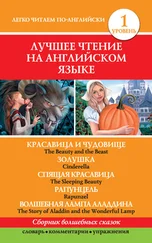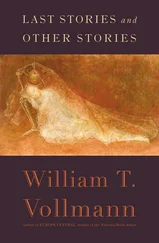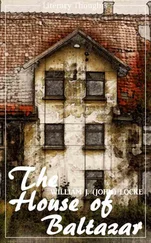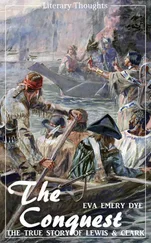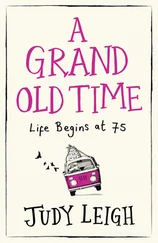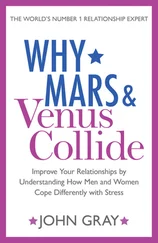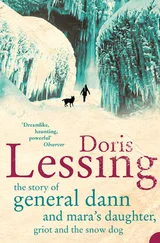50: “We who dwell in dark delusions…” — Keene, Twenty No Plays , p. 93 (“The Brocade Tree”).
50: Zeami’s five parts of a Noh play — Hare, pp. 49–51.
52: Attainment by the demonic shite of “Aoi-no-Ue” of Buddahood “free of delusion” — Bethe and Emmert, Noh Guide 7, p. 55 (words of chorus).
53: Facts about the Noh stage — Pound and Fenollosa, pp. 34–35. The original Kabuki stage was similar (Gunji, pp. 20–22).
54: Separation of stage by white sand suggests Shinto origins — Hoover, p. 150.
54: “The music and dance of noh have always been the central concern…” — Hare, p. 55.
54: Props “always” supplied based on the music (lit. “have been always equipped based on all different music”) — Tokugawa Art Museum, p. 121; trans. for WTV by Keiko Golden.
54: Information on flute and drums — After Bethe and Emmert, Noh Guide 3, pp. 65, 67 (notes 4–5); also after Tokugawa Art Museum, p. 131; trans. for WTV by Keiko Golden (English grammar slightly corrected by WTV).
54: “A sharp, urgent click” + “a muffled, funereal boom” — Hoover, pp. 151, 150.
54: Use of the flute to begin “Atsumori” — After Bethe, Emmert and Brazell, Noh Guide 5, p. 6.
54: Information on jo, ha, kyu — After Keene, Twenty Plays of the No Theatre , p. 13.
55: “Rhythmically unobtrusive.” — Hare, p. 53.
55: “Improvisation in Noh is probably closer to that of Sviatoslav Richter…” — Clark corrections, unnumbered pp. 3–4, 6.
56: Kotoba and other modes of singing — After Brazell, p. 122.
56: “Pitch in noh is relative…” — Bethe and Emmert, Noh Guide 7, p. 60.
56: “The importance of the music is in its intervals…” — Pound and Fenollosa, p. 32.
56: “Contrary to the principles of our art.” — Zeami, quoted in Waley, The No Plays of Japan , p. 30.
56: Footnote: “Noh music probably entered its present incarnation around the beginning of the sixteenth century.” — Information from Takeda and Bethe, pp. 29, 32.
56: Skill in Noh singing was widespread among the samurai class — After Guide to Edo-Tokyo Museum , p. 14.
56: “A truly fine play involves gesture based on chanting.” — Zeami (Rimer and Yamazaki), p. 44 (“Fushikaden”).
56: “Intelligent dancing — which might as well be called correct dancing…” — Denby, pp. 146–47 (“How to Judge a Dancer,” 1943).
56: “All the exercises must be severely and strictly done..” — Zeami, p. 16.
57: “Noh is for the warrior…” — Mr. Ichikawa Shunen, interviewed in Tokyo, January 2008; translated by Kawai Takako.
57: Admonition for performing “Matsukaze” — Zeami (Rimer and Yamazaki), p. 184 (“Sarugaku dangi”).
57: Umewaka Minoru’s “roll” for dancers — Pound and Fenollosa, p. 30.
57: “All I am able to do is teach you the form…” — Iwasaki and Brown, p. 297.
57: “There is no room here for my own thinking.” — Zeami, p. 69.
57: Mr. Mikata Shizuka — Interviewed in his studio in Jumenji Temple, Kyoto, 2004.
57: Footnote: “It is… possible for an actor to deliver a line perfectly…” — Keene, Twenty Plays of the No Theatre , p. 2.
59: Description of mai style — Cavaye, Griffith and Senda, p. 52.
59: Mr. Kanze Hideo — Interviewed in the lobby of his hotel in Kyoto, May 2005.
61: “Their movements become dreamlike glosses…” — Bowers, p. 17.
61: “She was instantly recognized as a geisha of the very first class…” — Kafu, p. 52.
61: Meanings of red brocade robe, under-kimono’s colored neckband and diamond-fish-scale design (this I have extrapolated to the “sword and mountain” design) — Brazell, p. 121.
61: Colors associated with middle-aged women — Interview with Hagashi Sumiko, curator, Kanazawa Noh Museum, January 2008.
61: Madwomen shite s let their right sleeves slip— Information from Takeda and Bethe, p. 246 (checklist of the exhibition).
61: Descriptions of Noh costumes — Mitsui family, trans. for WTV by Yasuda Nobuko, pp. 19, 56, 46, 1–15 (summary, from which I take information on fabric-dyeing and the air raids), 25, 21. Interpretations (except for that of the Chinese monster, which is spelled out in the text) are mine.
62: “Merely since the middle of the Edo period.” — Information from Takeda and Bethe, pp. 118–19 (Kawakami Shigeki, “The Development of the Karaori as a Noh Costume”).
63: Precedence in age of the Komparu School’s mask — Rath, p. 11.
63: Relative newness of Kita School — From same interview with Mr. Kanze Hideo.
63: “Kanze has the reputation of being on the flashy side…” — Clark corrections, unnumbered p. 5.
64: Kanze’s preference for ko-omote s to play shite roles — Just to remind you of the infallibility of my understanding, I report from Hori, Masuda and Miyano, trans. for WTV by Yasuda Nobuko: “Ko-omote is often used for tsure in Kanze-ryu” (p. 32).
64: Footnote: Remarks of Mr. Umewaka, Jeff Clark and Dr. Yokoyama Taro — From first Umewaka interview, from Clark corrections (unnumbered p. 6), and from Dr. Yokoyama Taro’s communication to WTV, p. 3 of 3.
64: Brighter Noh pieces should be performed at night — Ibid., p. 39.
64: “The more intense the emotion, the more regular the metre.” — Tyler, p. 9.
3: MALIGNANCE AND CHARM
65: “Noh was supposedly born out of sacred Shinto chants…” — Information from Pound and Fenollosa, p. 30.
65: “Masked court dances also seem to have been already on the scene…” — Information from Rath, p. 12.
65: Footnote: Evolution of masks — After Nakanishi and Komma, pp. 102–3.
65: Miraculous origins of masks; ability to bring in a good rice crop — Ibid., pp. 18–21.
66: Motoyoshi on masks — Zeami (Rimer and Yamazaki), (pp. 230–31, 236–38).
66: Definitions of “Sarugaku dangi” + “Noh was considered the property of the government…” — Prof. Nishino Haruo, Director, the Nogami Memorial Institute for Noh Studies, Hosei University, Tokyo, October 2006, Tochigi Reiko interpreting. Prof. Nishino showed me a two-volume work in German, copiously illustrated, by Friedrich Perzynski, which he thought to be the best treatment of this subject in any language. Unfortunately, he said, the original was extremely rare, and the English translation was poor. He was in the process of translating it into Japanese.
66: “But by the late sixteeth century…” — All information in this sentence from Rath, p. 29.
66: “There are now sixty main types…” — Information from Rath, p. 14. My translator Yasuda Nobuko summarizes Hori, Masuda and Miyano thus (pp. 17–24): “The number of Noh masks differs largely depending on where the line between basic masks and variant masks is drawn. Considering various theories, most of the current programs can be performed with 60 masks. The author divides the masks into groups A to U, with male masks and female masks as the major categories (Okina masks are treated separately). The latter half of this section explain the use and effect of masks, with examples from various programs. In many of them, different masks are used for the first part (Maeshite) and the latter part (Nochijite). In modern days, unique combinations of masks and costumes are used, bringing in fresh ideas to Noh theater.” I remain far too ignorant to attempt to categorize the variation in masks and other Noh accoutrements over time. One Tokugawa collection of these items, so the catalogue informs me, “shows a splendid Edo period Noh spirit that is far different from that of Meiji period Noh collections” (Tokugawa Art Museum, p. 51; trans. for WTV by Keiko Golden. English grammar slightly corrected by WTV). I saw the exhibition and admired it, but certainly could not distinguish Edo from Meiji.
Читать дальше

